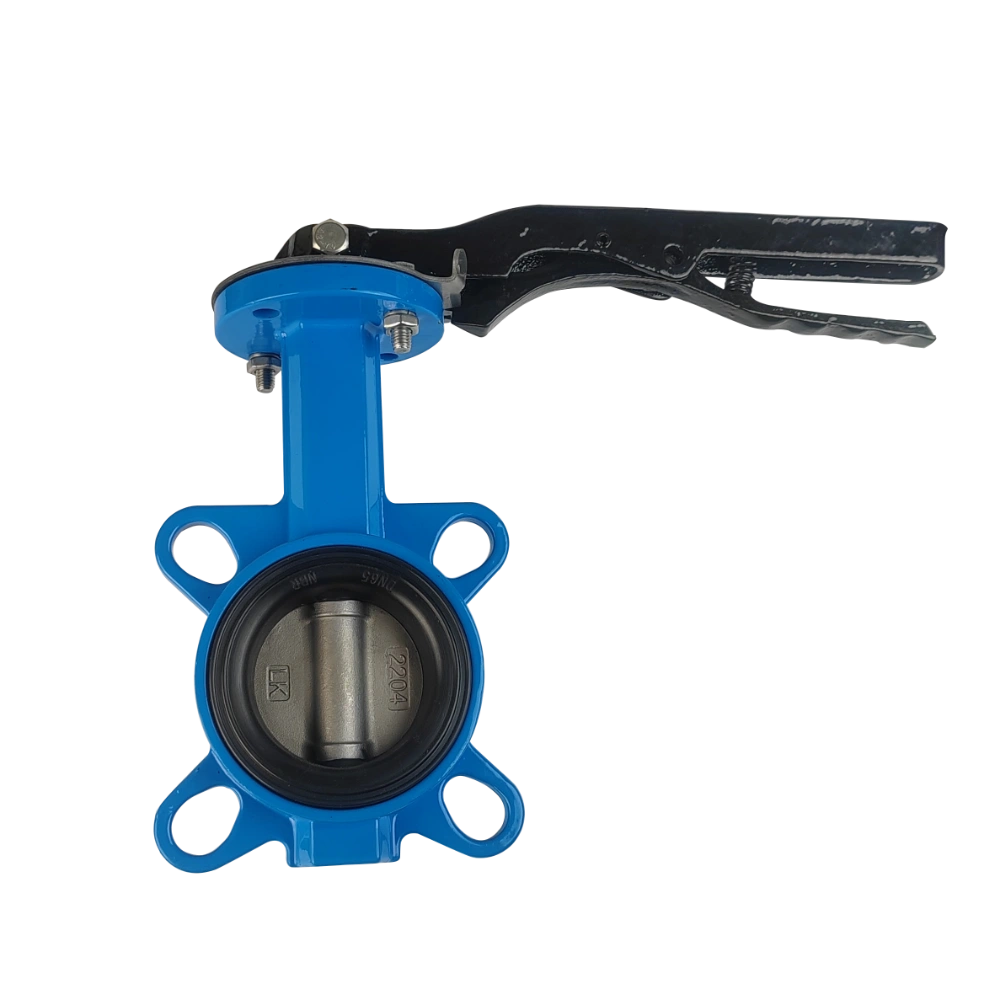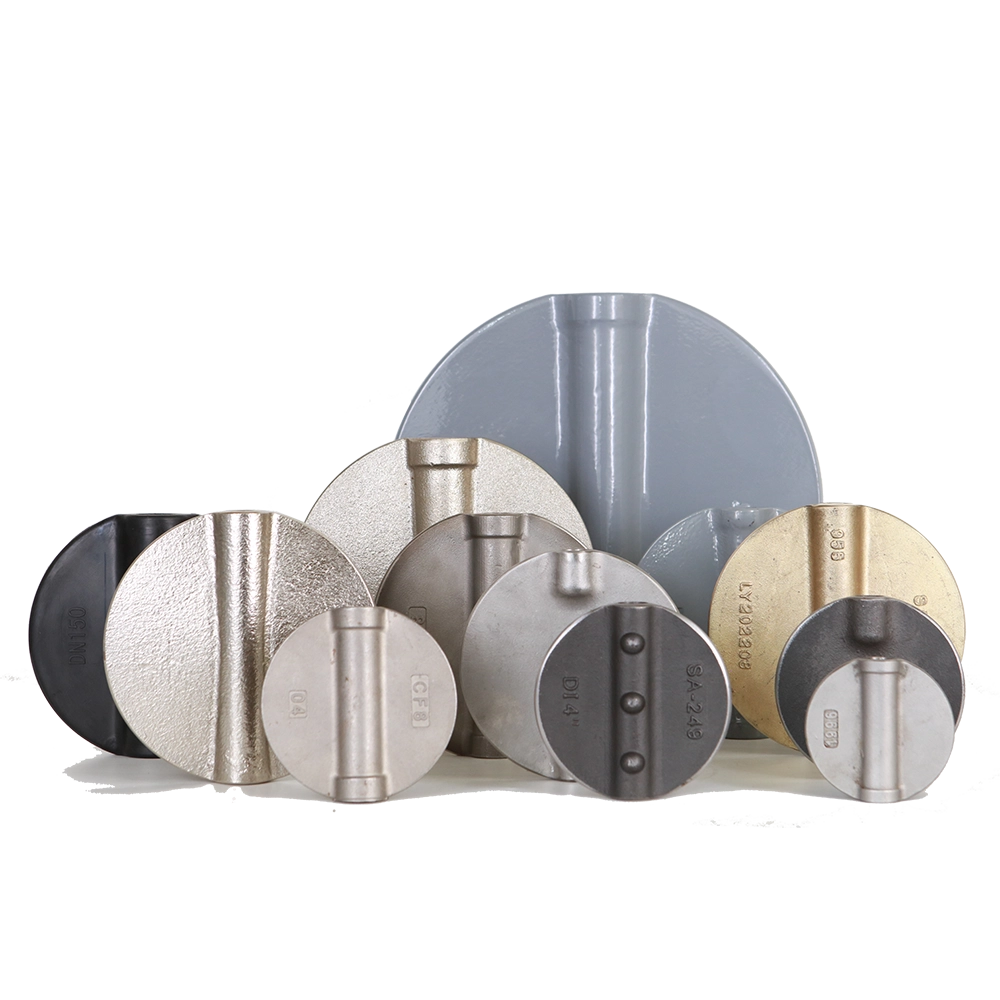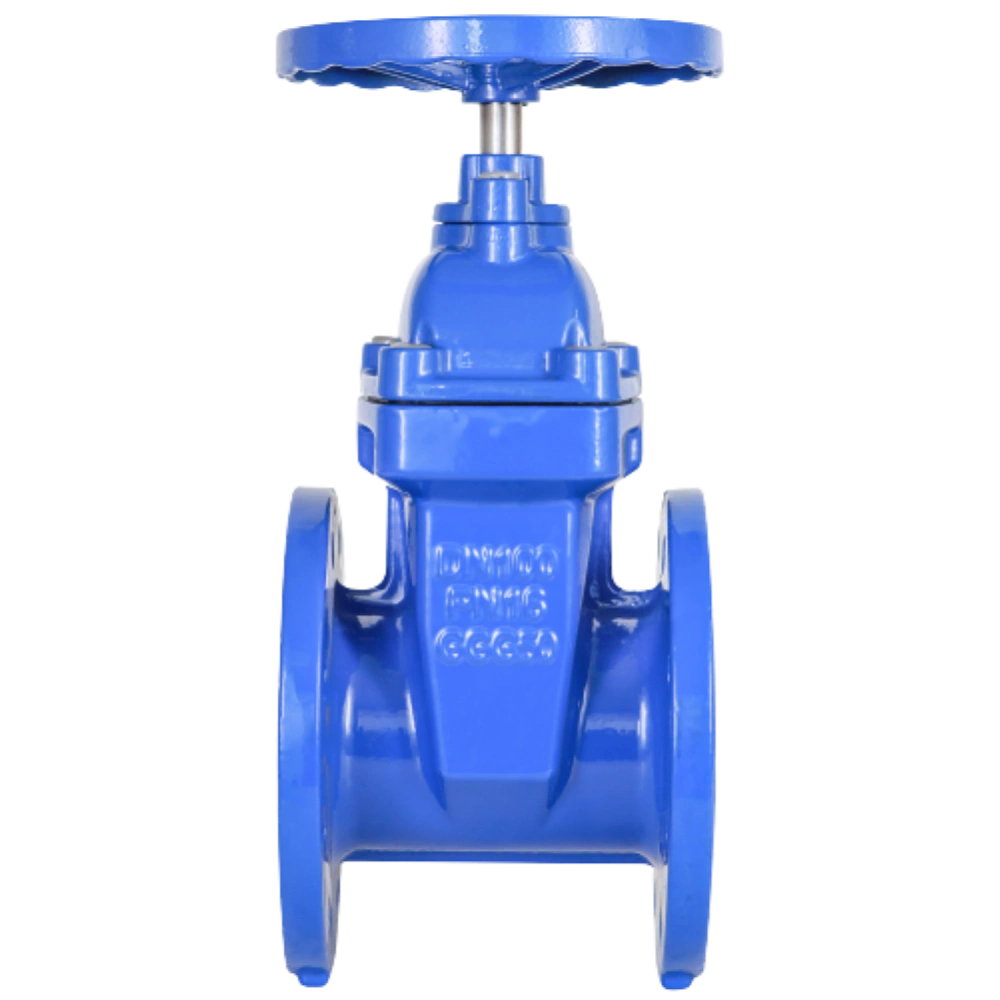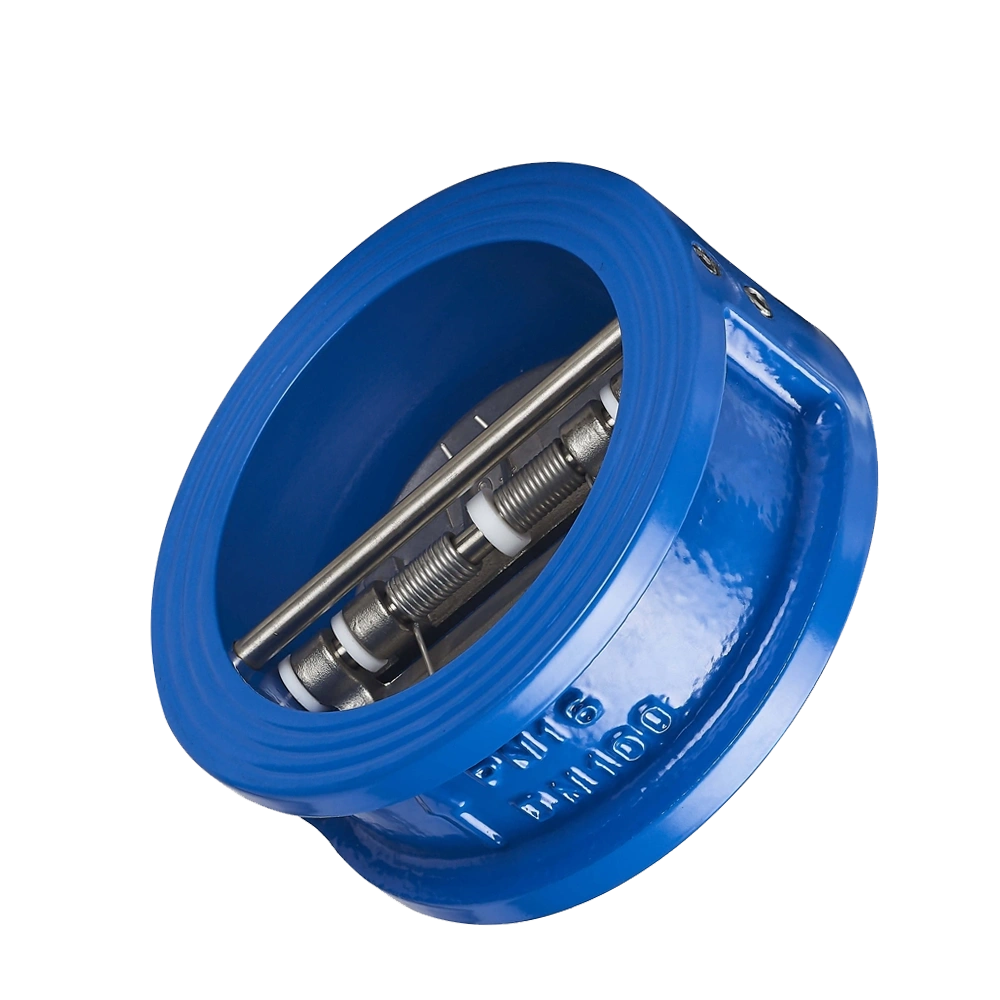Butterfly valves play a pivotal role in fluid and gas transportation. Their durability and simplicity make them suitable. Despite their durability, they can encounter different issues. So, butterfly valve troubleshooting becomes necessary to ensure optimal performance.
Interestingly, valves of different sizes are available. You might have one smaller-sized valve in your home. By understanding the issue, you’ll be able to fix it in the future. Larger butterfly valves are standard on a large industrial scale. So, this article is also helpful for those in the plumbing field.
Imagine yourself with a leaked butterfly valve. How would you fix that issue? This leakage can have severe consequences if pipes carry oil or gasses. However, you don’t need to fret. This guide will provide you with all common issues. Above all, this article will also provide you with reliable solutions. So, let’s get started!
Butterfly valves are popular as fluid flow controls across many industries. They are quarter-turn valves that operate just 1/4 of a full 360 degrees. In simple words, this valve moves the disc to just 90 degrees. Once the disc is perpendicular to the body, the value is opened. The fluid flows with ease.
Upon closing, the disc moves back and aligns with the body. Simply put, from 90 degrees, it goes back to zero degrees and stops the liquid flow. An actuator or handle at the top controls the movement of the disc. Some butterfly valves have manual actuators, and some have more electric ones.
This valve is placed between two pipes. The bolts and screws attach the body of value with flanges of pipes. These valves are indeed robust. They don’t get issues now and then. However, they are not prone to issues. Let’s dive down and discuss the common issues of butterfly valves.
Butterfly Valve Troubleshooting of Common Issues
Butterfly valves remain under high pressure. They carry high-pressure liquids and gases, so they show wear and tear with time. However, there is no need to be concerned. Fixing butterfly valve problems is also relatively more straightforward. The section below will mention each issue and its reliable solution.
1. Leakage
One of the biggest reasons for leakage is damaged disc seals. As you know, a disc is placed on the body. It provides seals and does not allow fluid to trip outside. However, with continuous pressure from fluids, these disc seals become weak.
These weaker seals cause fluid to leak. This week, seals are even more dangerous when pipes are carrying glasses. So, this issue needs to be fixed immediately. Many other factors contribute to weak seals, including corrosion and valve aging.

Solution & Troubleshooting
You can apply grease or thick viscous gel to the seals. This will provide a short-term solution. However, changing the seals for a permanent solution would be best. Applying gel is not recommended if the adjoining pipes carry gasses. To change the seals, remove the butterfly valve.
If the disc’s seals have rusted, don’t use it. It will continue to give you issues. Instead, get it replaced with a new disc with strong seals. Many experts recommend regular disc inspections. Corrosion weakens the disc and affects its performance. In short, changing the seals is the best solution.
2. Sticking of Disc
Sometimes, the valve’s disc can get stuck. For example, once you open it, the disc will turn at a 90-degree angle. This movement will allow the flow of fluid. But upon closing, the disc won’t move and gets stuck. If you apply force, it could damage the body or shaft.
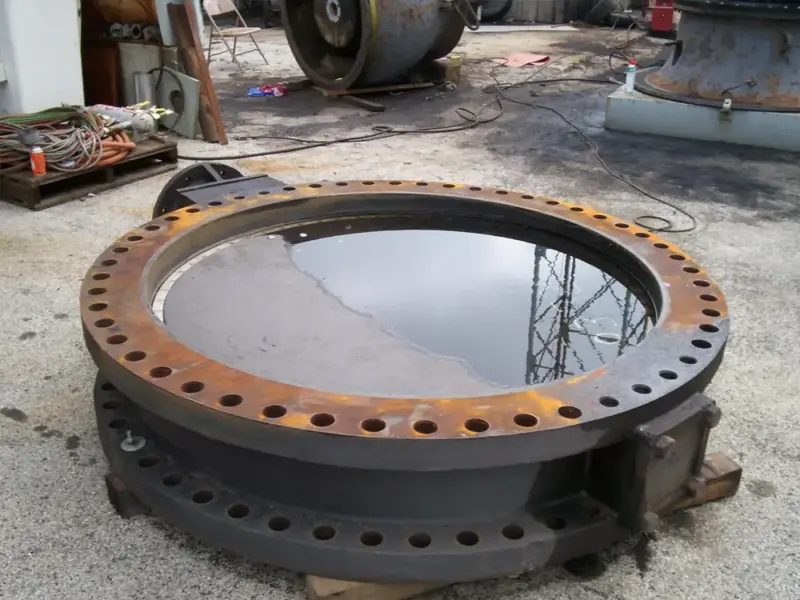
Solution & Troubleshooting
Occasionally, parts of the butterfly valve get dirty. The dust and debris start to accumulate between the parts. This accumulated dust prevents the disc from moving freely. All you need to do is clean those areas with a lubricant. Grease can ease this sliding and help in solving the issue. If you see any sign of rust, remove it immediately.
3. Noise and Vibration
The butterfly valve can produce noise and vibration. This issue is rare. It generally happens when fluid flows at a very high speed. The culprits are loose bolts and misalignment of the valve and pipe. The vibration could be annoying for the operators. If it lasts for a long time, it can destroy the internal component of the valve.

Solution & Troubleshooting
Multiple factors contribute to vibrations. The primary reason is loose bolts. Moreover, the unbalanced valve between pipes can also be a big reason. The best solution is to reinstall the butterfly valve between the pipes.
You should make sure that screws are tightened with proper torque. Alignment between the valve and pipes must be carefully maintained. Before tightening the value, check by opening and closing the disk. These measures will remove the noise and vibration.
Quick Tip: If the valve bearings are weak, they can also cause vibration. So, if reinstallation does not solve the issue, check the bearing. If they are worn, you should replace them with new ones.
4. Slow on and off of the disc
Sometimes, the disc shows lags when moved with the handle. It does not open or close quickly. This lag or delay will have a more prominent impact if the issue remains. However, it does not impact the valve’s performance during work.
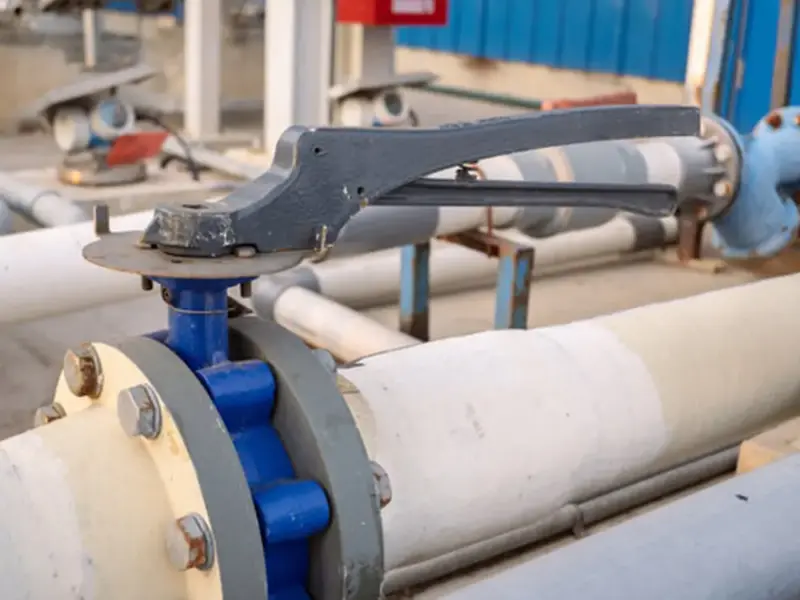
Solution & Troubleshooting
You can keep using the valve even if this issue occurs. Once the pipes are idle, you can take the butterfly valve out to see the issue. Generally, this issue happens due to friction within the valve stem.
Excessive rust buildup can also contribute to this issue. To reduce friction, you should use the lubricant within the valve step. This will ensure smooth movement. Moreover, rust buildup only happens over time.
When butterfly valves are left uncared for, they start to deteriorate. Rust and dust buildup grow. Cleaning the valve is very important. It would be best to inspect for rust. If there are any signs, take measures to remove the rust. This will ensure trouble-free movement of the disc.
5. Actuator Malfunction
The Actuators of the butterfly valves are very durable. They generally don’t show any malfunctioning. However, if the valve is used for years, the actuator can get stuck in one place. The disc goes through a 90-degree turn while opening and closing. However, this disc does not move with a faulty actuator.

Solution and Troubleshooting
This issue is more common in old valves. Imagine you use a butterfly valve to join pipes. The valves remain there, holding two pipes for many years. The water keeps flowing through it. You never feel the need to stop the flow by closing the disc. In this case, the actuator or handle may fail to work due to prolonged inactivity.
This is due to the corrosion. The actuator remains in one place for years. So, rust and other contaminants keep accumulating in it. As a result, it becomes difficult for the actuator to move. The solution to this issue is complex. You’ll need the help of a professional to replace the actuator.
Tips to Prevent Common Butterfly Valve Problems
The wise men say that prevention is always better than cure. If you take preventive measures, your butterfly valves will not fail. Most valve failures occur due to operator negligence. Here are some valuable tips for preventing common issues.
- First, you should always inspect the valve after every month. This will help you know its condition. In case of rust, you’ll be able to take immediate action. In the initial stage, the rust can be easily removed. But if you leave it for a long time, the rust will spread and make your valve useless.
- Generally, operators consider butterfly valve installation very easy, which is also true. However, during the process, the operators quickly leave some points unchecked. For example, they don’t balance the valve between pipes, which results in noise and vibration.
- The bolts are used to attach valves to pipes. If the bolts are loose, it could result in several issues. You are more likely to feel more vibration and noise. Therefore, the bolt must be tight enough to meet the recommended torque. A loose bolt can also result in the valve’s loose attachment to pipes.
- Do you know that butterfly valves have many moving parts? These parts can get rusty over time. So, you must use lubricants after regular intervals. It is recommended that you remove the valve after every 3 to 4 months and apply lubricant on every part. This will increase the life of butterfly valves and ensure smooth movement.
Rust & Corrosion: A Major Problem
In butterfly valves, the rust causes 90% of the issues. A valve that remains safe from rust does not get any fault. Unfortunately, most of the valves get rusty. They remain in touch with fluids. So, this causes corrosion in the valve parts. So, how can you prevent rust?
- You should apply a layer of grease or any other lubricant to the valve.
- You can also use an anti-corrosion spray to remove the rust, or a layer of pain will also work fine.
- Make sure that no air is trapped inside the valve. If the air is present, it will cause rust and corrosion.
Want to increase the life of your butterfly valve? Want to save it from common issues? There is one answer: secure it from rust. When the valve starts to rust, it starts to deteriorate, and multiple issues start to pop up. So, be proactive and take preventive measures.
Frequently Asked Questions
How to troubleshoot a butterfly valve?
Each problem requires a specific solution. Generally, you can troubleshoot by cleaning and removing the rust. Moreover, the moving part of the valve must be adequately lubricated.
What causes a butterfly valve to fail?
Rust buildup is the leading cause of butterfly valve failure. Due to rust, the parts start to deteriorate and malfunction. If the rust is removed, the valve will not show any issues.
Can a rusty butterfly valve be repaired?
Yes. However, the extent of the damage determines the extent of the repair. A valve with severe rust will have to be replaced.
How do you inspect a butterfly valve?
A visual examination is good enough for inspecting butterfly valves. You can start by checking the external surface. If you notice any rust or damage, it is a red light. Moreover, close attention must be paid to the valve body, disc, and seals.
Conclusion
Despite their strength, butterfly valves can develop issues over time. This guide discusses common problems and solutions. Keep your valve clean and rust-free, and you’ll be able to use it for many years without any trouble.

